Panama Trip
November 16-28, 2007
![]()
Day 1, Friday November 16, 2007
Day
2, Saturday, November 17, 2007
Day
3, Sunday, November 18, 2007
Day
4, Monday, November 19, 2007
Day
5, Tuesday, November 20, 2007
Day
6, Wednesday, November 21, 2007
Day
7, Thursday, November 22, 2007
Day
8, Friday, November 23, 2007
Day 9, Saturday, November 24, 2007
Day
10, Sunday, November 25, 2007
Day
11, Monday, November 26, 2007
Day
12, Tuesday, November 27, 2007
Day
13, Wednesday, November 28, 2007
![]()
Day 9, Saturday, November 24, 2007
We spent a fairly leisurely morning on top of the Canopy Tower, well into late morning, allowing us to finally see Blue Cotinga (two distant males in the scope). We noted a Snowy-bellied Hummingbird sleeping in the canopy.
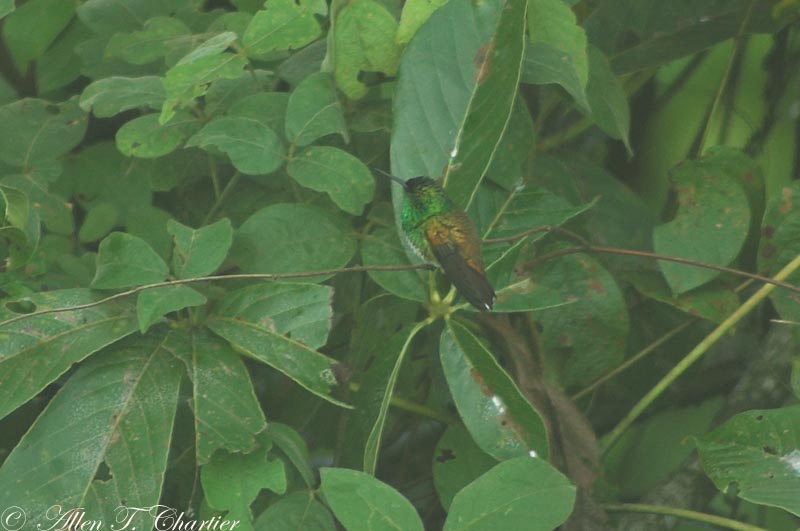
And a Violet-bellied Hummingbird perched up fairly high as well.
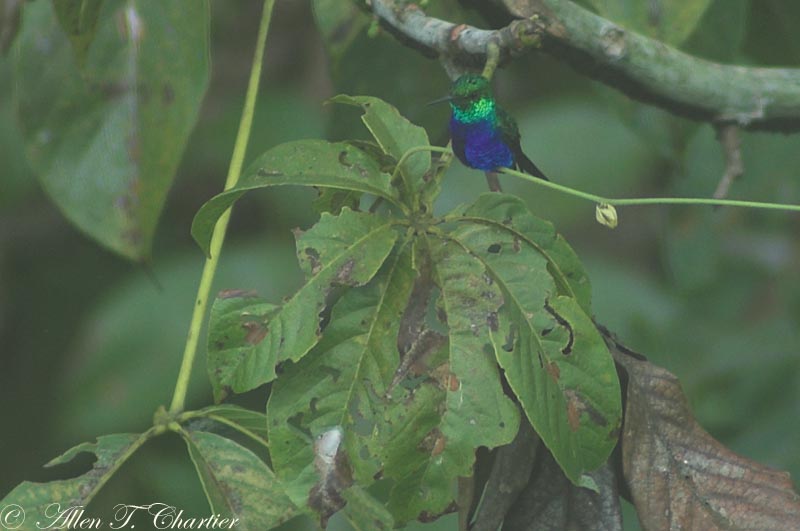
Although we had seen many of them on the trip so far, the White-shouldered Tanagers only allowed photos this morning from the observation deck, an adult male and an immature male.
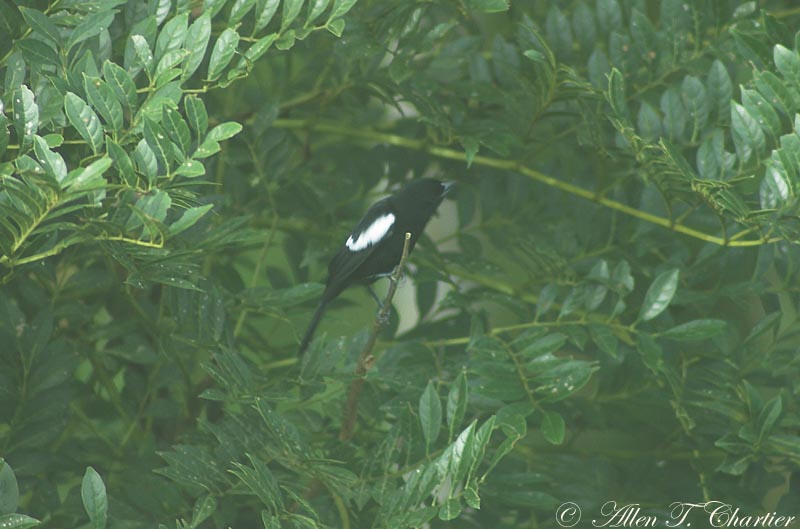
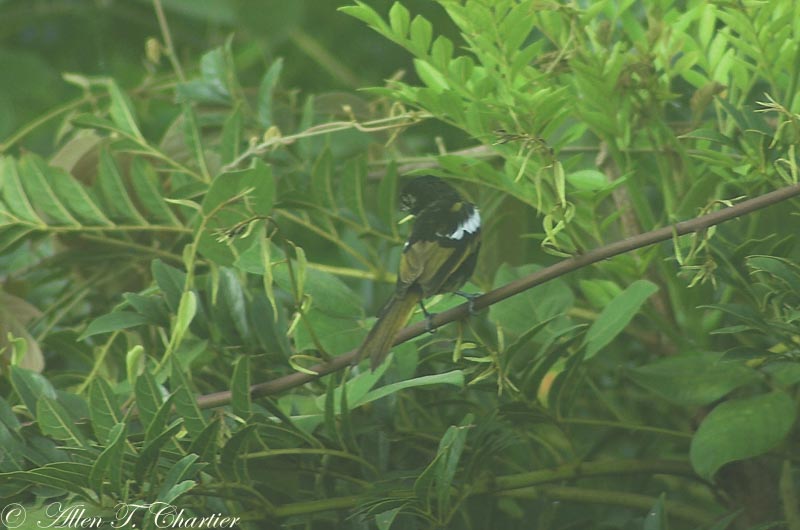
A Summer Tanager, probably an immature male based on the amount of orangish on his crown, had been a daily fixture from the observation deck.
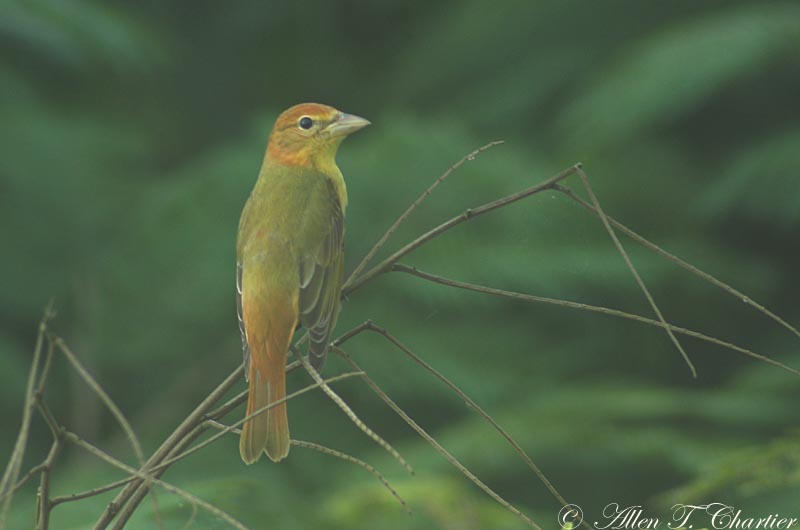
He came over and landed on the railing, as if to say goodbye to us. But in reality, I'm sure the rail just provided a good perch for him to watch for the flying insects that he was catching, sometimes in mid-air like a flycatcher.
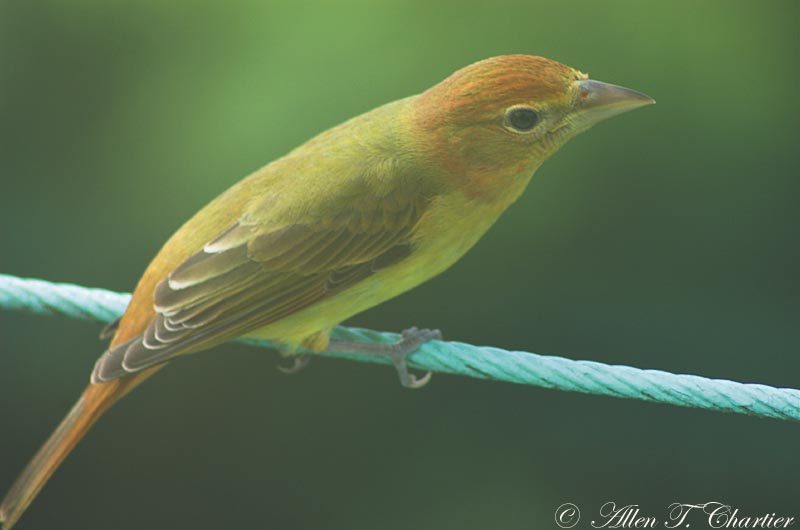
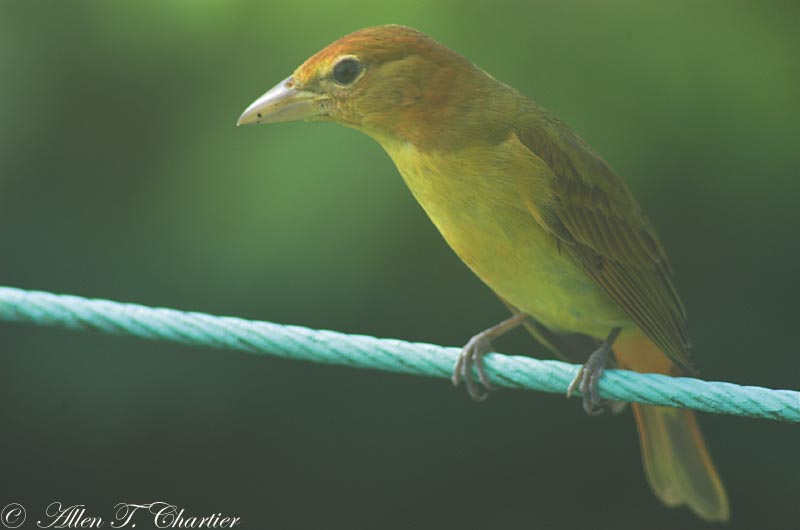
As if to prove this was a good perch, and nothing more, a Palm Tanager came in close as well.
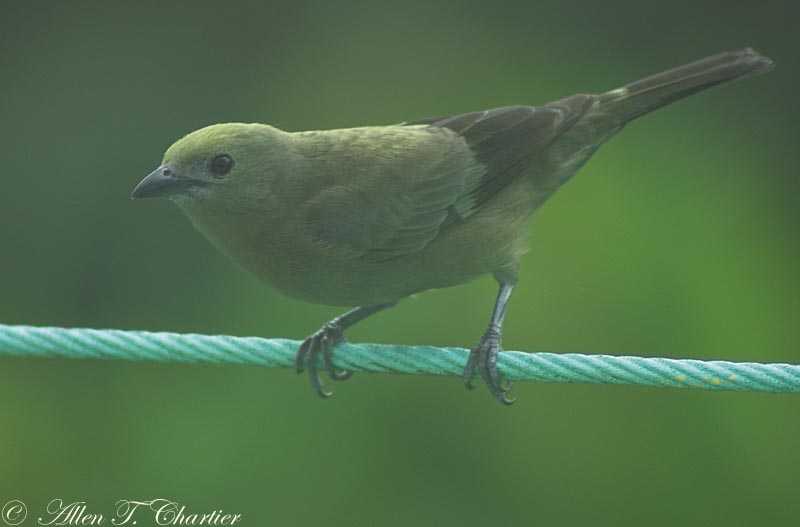
A large butterfly in the canopy, which we had seen on previous mornings as well, was this swallowtail which has variaously been called Thoas Swallowtail and King Swallowtail, but the scientific name is stable; Papilio thoas. It is very similar to the Giant Swallowtail we have in Michigan, but it doesn't occur this far south, and there are minor differences in wing markings as well.
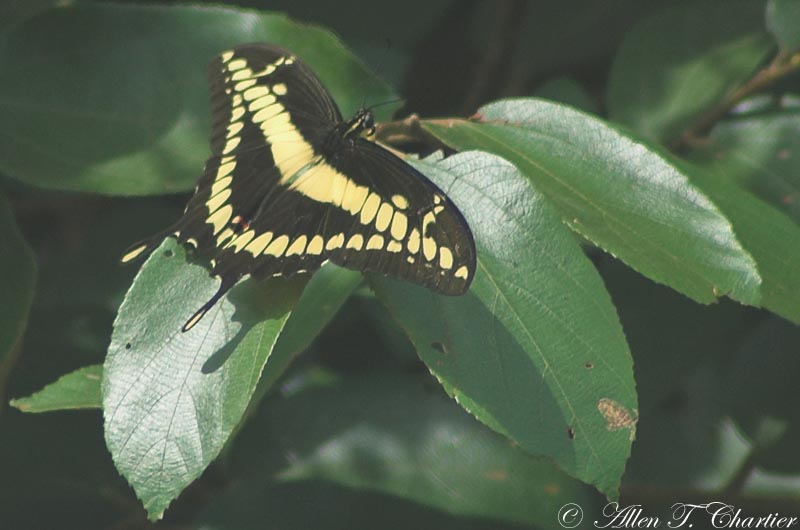
We then went down to ground level and spent a few final moments with the hummingbirds at the feeders down there. Of course, vying for our attention as always were the Blue-chested Hummingbirds.
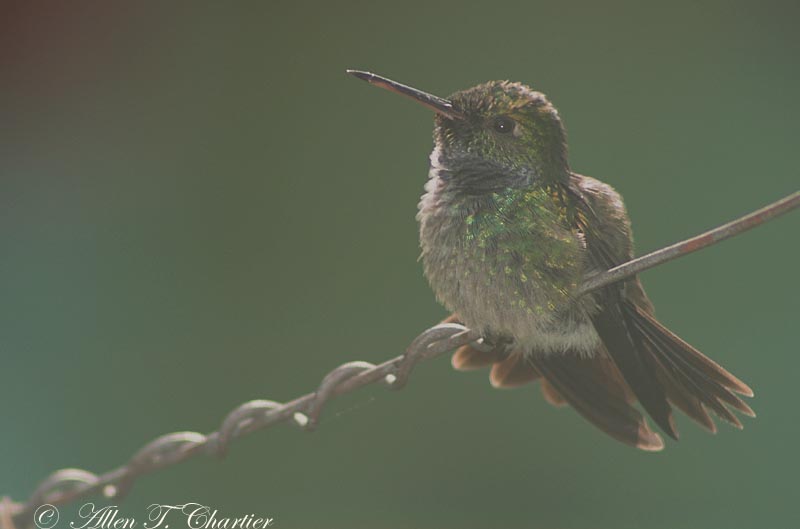
Another low observation deck, which is apparently used for barbeques (rained out for us), provided better opportunities for photographing hummingbirds as there was more natural surroundings (the painted turquoise walls of the building are in the background of most of my hummingbird photos from here). Hummingbird feeders should be hung around the perimeter of this lower deck as well, as it gives a much more pleasing background and different lighting, as with this Blue-chested Hummingbird.
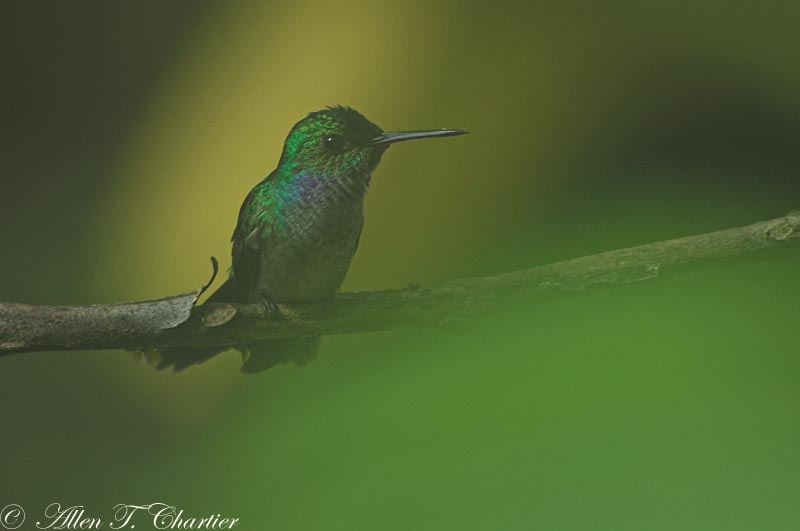
Just before we departed, a male Fasciated Antshrike made an appearance. And, contrary to its normal shy behavior, it wasn't well up in the trees but on the ground right below us! The reason soon became apparent as it was attacking a very large grasshopper, which is visible below its tail in the first photo, and near its head in the second and third photos. The grasshopper has a wing pattern that is similar to the antshrikes finely barred upperparts. The antshrike is about 7-inches long, which would make the grasshopper nearly 3-inches long. What a way to end our stay at the Canopy Tower!
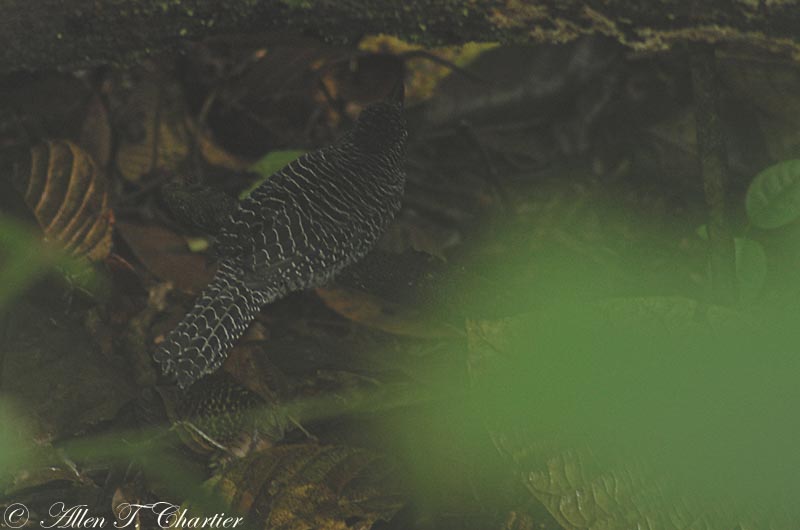
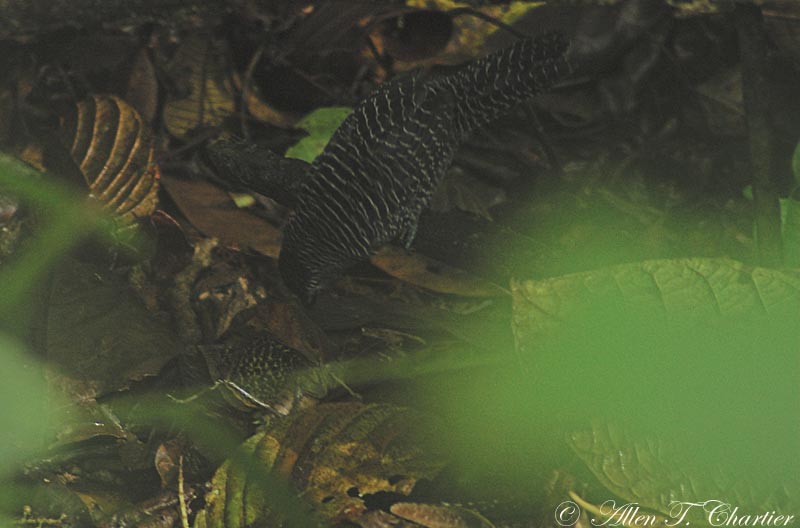
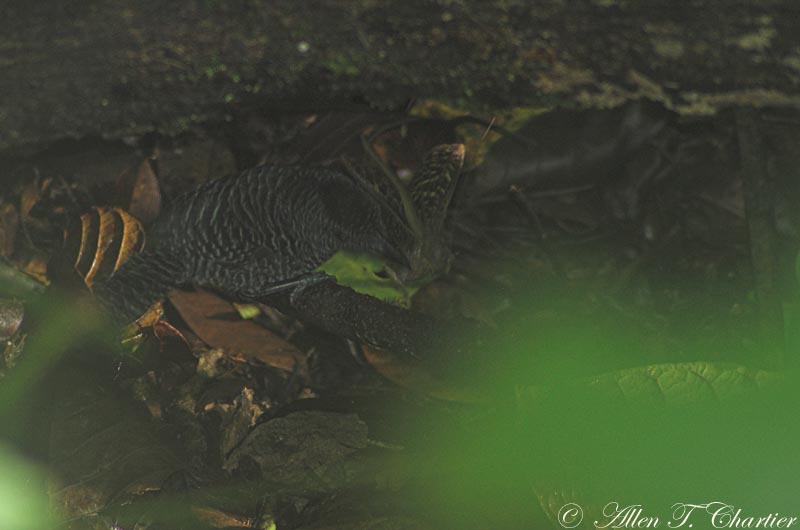
Our bus arrived and we made the two-hour drive through mainly agricultural areas and human settlements west toward El Valle, and the Canopy Lodge, arriving just before lunchtime.
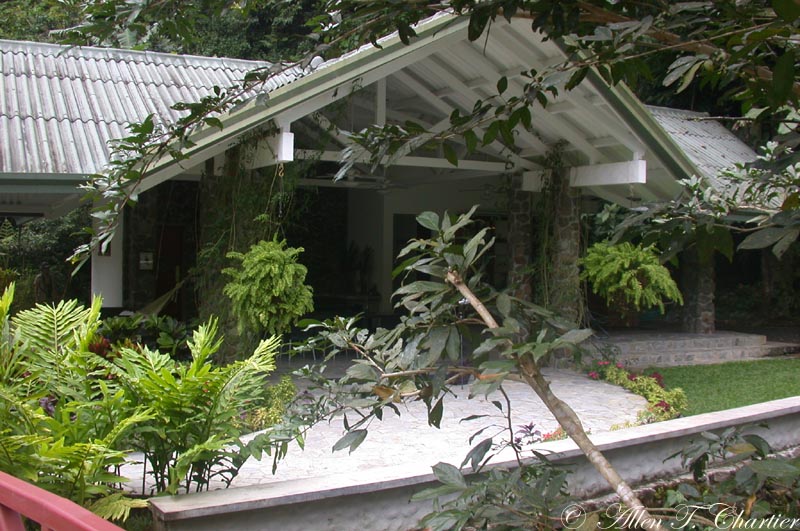
The Canopy Lodge is in a beautiful setting, at a slightly higher elevation than the Canopy Tower, and adjacent to a wonderful mountain stream. It was not as hot here, but every bit as humid.
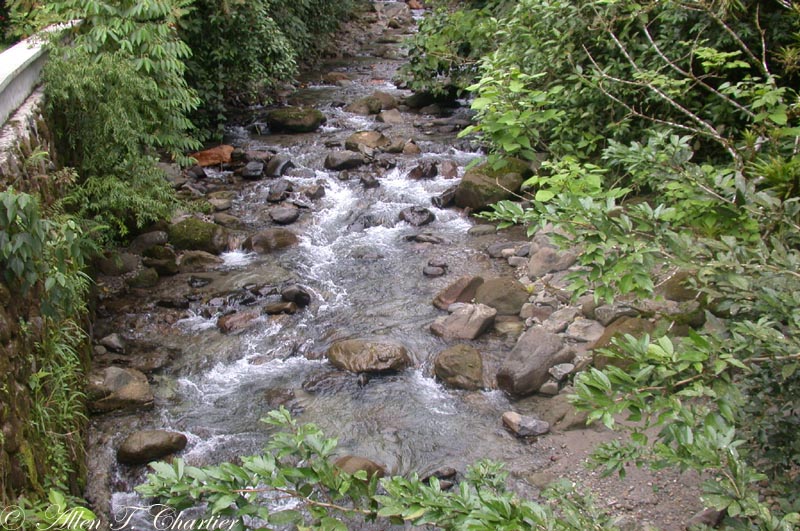
On the steps leading down into the gardens, this large (12-inches) Common Amieva (Amieva amieva) lizard was reluctant to give up his sunning spot.
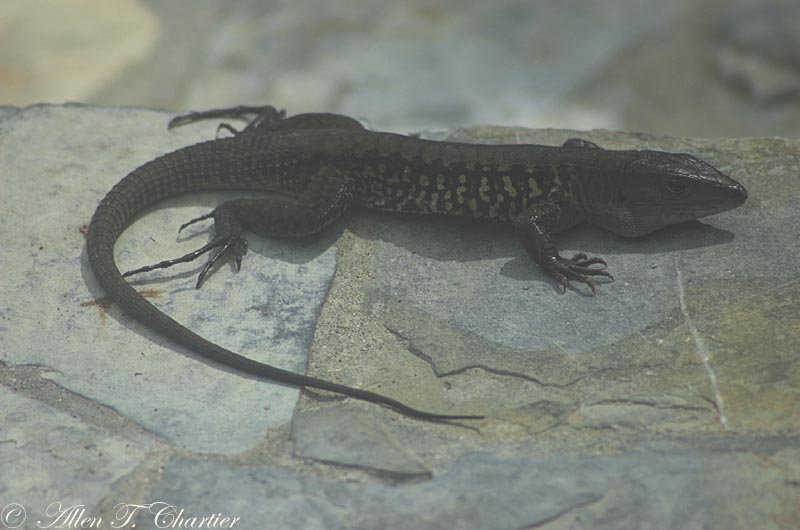
And an even larger (2-foot) male Common Basilisk (Basiliscus basiliscus) was sunning on a rock on the edge of the stream. This is one of the species of lizard that escapes by running along the surface of the water, though the really big ones like this tend to sink and start swimming after a few feet.
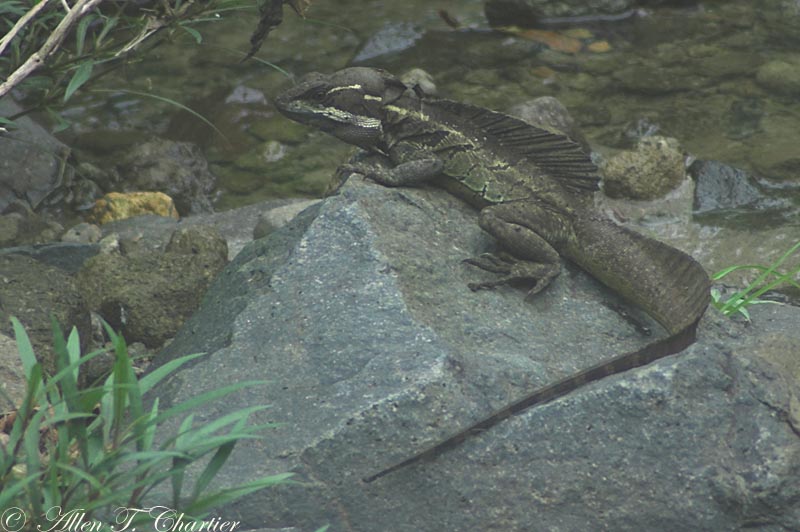
Before lunch, we watched the banana feeders for a while. This Dusky-faced Tanager made a welcome appearance. We had seen a group of this species along the Achiote Road, but they didn't show themselves very well.
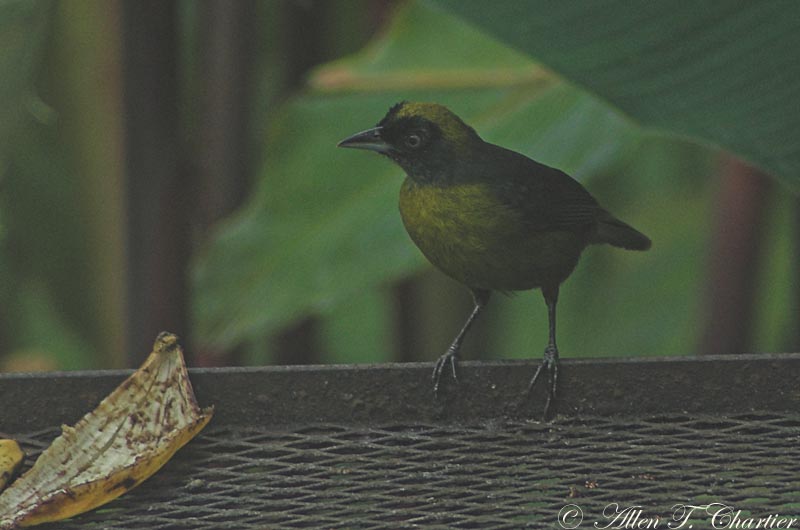
And the beautiful Thick-billed Euphonias were frequent visitors to the feeders as well.
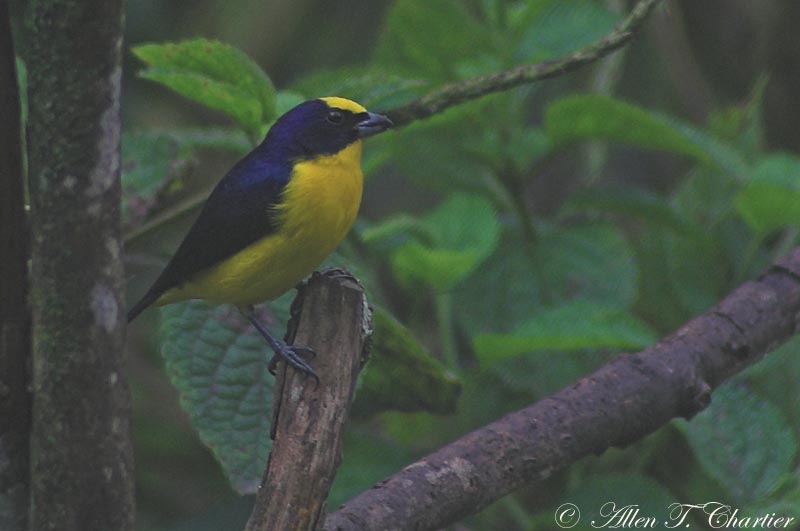
By far the most common bird at the feeders were the Clay-colored Robins, but there were several less frequent visitors including both Crimson-backed and Flame-rumped Tanagers, White-lined Tanagers, Bananaquits, Tennessee Warblers, Black-striped Sparrow, and even Rufous Motmot among others.
We became acquainted with the new hummingbirds in this area, though it was more difficult to see and photograph them here as the feeders were spread out around the grounds, and many species seemed to prefer the flowers (mainly vervain). The first new hummingbird was the small Garden Emerald. It gave good views early, allowing me to quickly get the photo below, and although we hoped this would be a regular occurrence, it was not to be and not everyone got to see this bird (a male Violet-headed Hummingbird took over this perch for most of our stay).
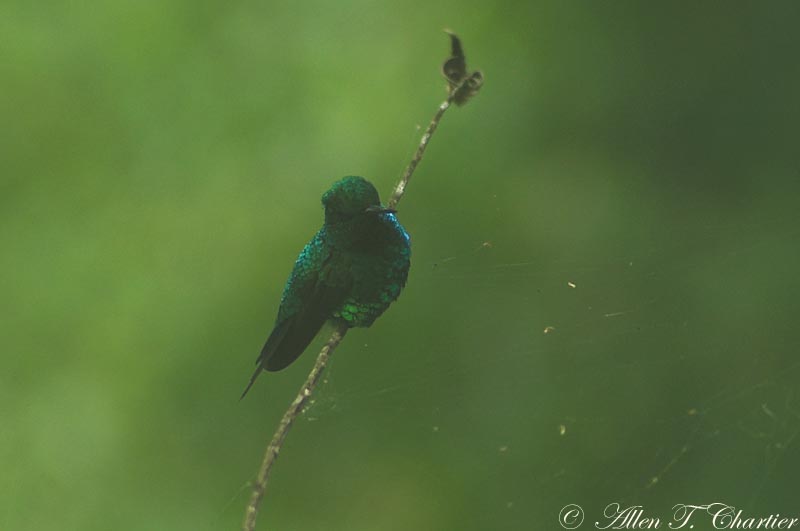
One of our favorite birds of the trip, seen daily at the Canopy Tower, was the Violet-bellied Hummingbird. Although we weren't going to see them at the Canopy Lodge, another green and purple hummingbird was a good replacement here. The Violet-crowned Woodnymph seems poorly named, but if you look carefully you can see a purplish-tinge on his forehead.
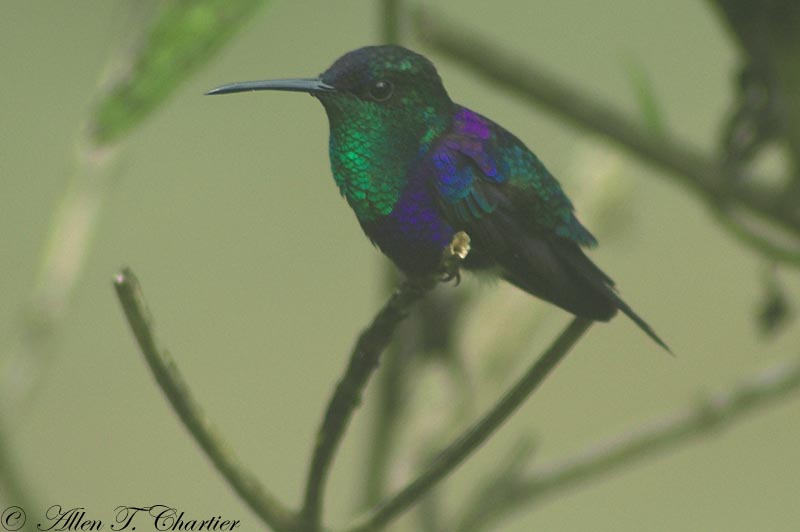
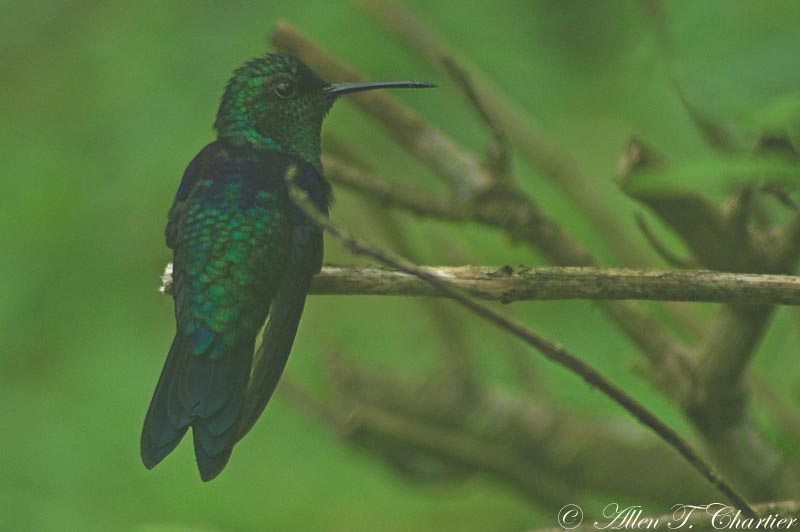
After lunch, and the now expected brief rainshower, most of us took a short walk up the road to the Chorro el Macho area. There was a waterfall here, which required an entry fee of $3 per person and which also gave access to the zip line adventure. Stella took advantage of the zip line on her own the next day, while the rest of us went birding.
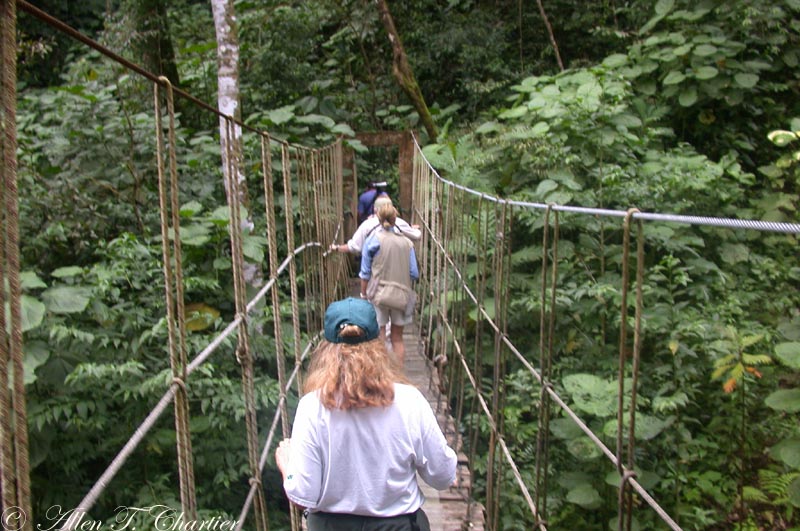
The trail crossed the stream on a wobbly rope bridge and entered a nice forest with trees covered with epiphytes. This Social Flycatcher is perches on a branch between two species of orchid, the smaller one in bloom and the larger one recently finished blooming.
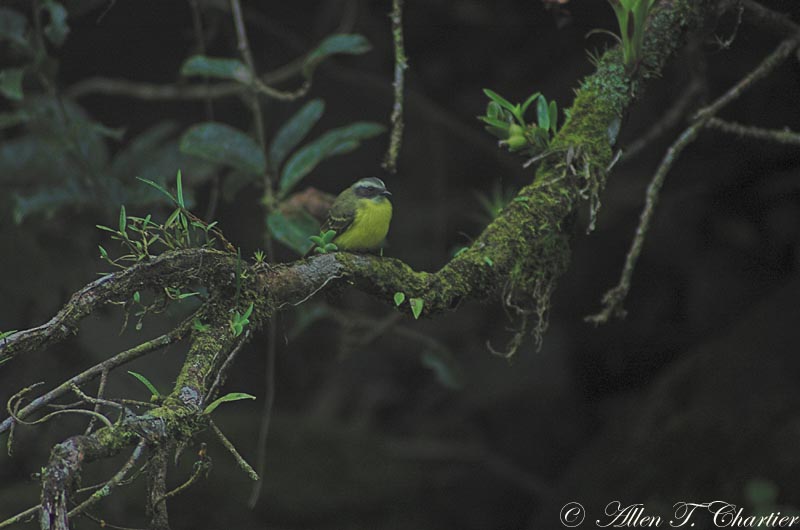
There were plenty of flowers for hummingbirds, especially hermits, including this member of the Acanthidae family (Razisea spicata).
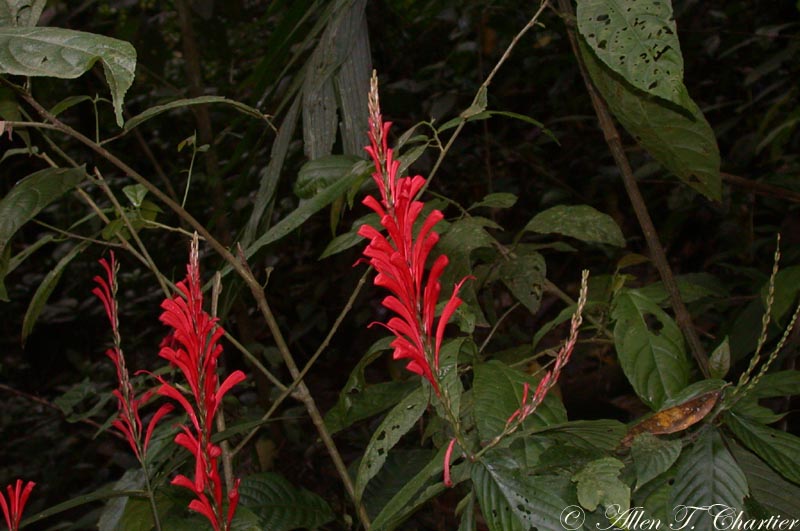
Sloths were becoming routine, but this female Brown-throated Three-toed Sloth had a baby in tow. If you look carefully, you can see part of the baby sticking out below her left arm.
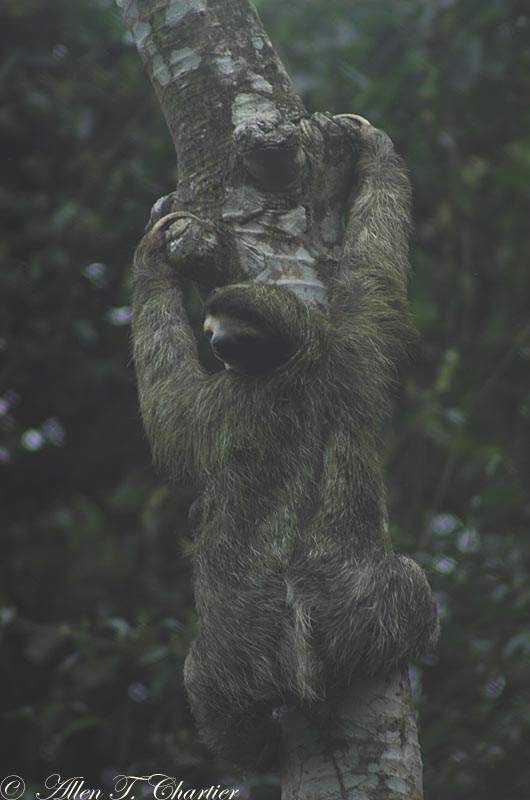
One objective of walking this trail was to find the shy Tody Motmot. Our guide, Tino Sanchez, put a lot of effort into trying to whistle one out for us. At one point, we had up to four of them calling back all around us, but none of those was interested enough to approach closer. Then, one individual at another nearby location responded well, and we all got good views of this diminutive motmot. A great way to end the day.
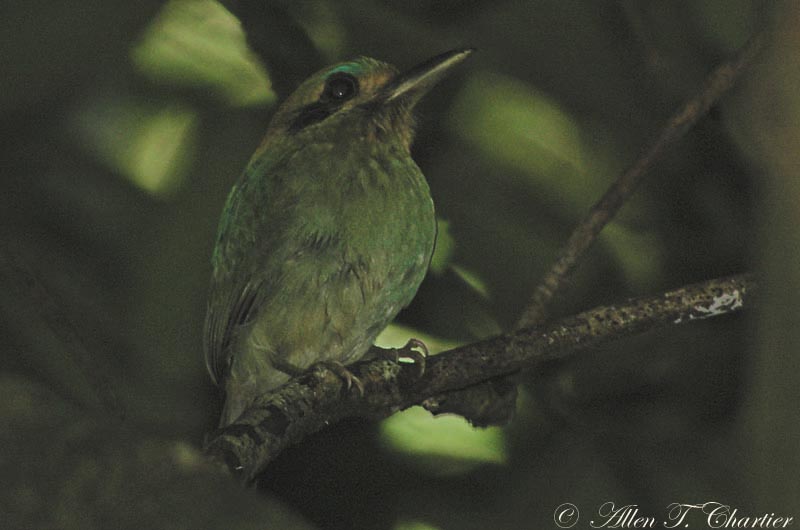
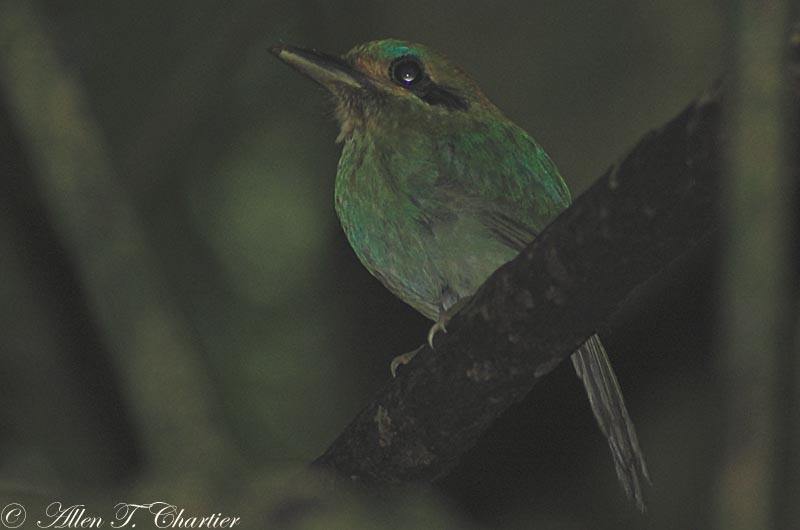
121 species for the day, 284 for the trip.
![]()